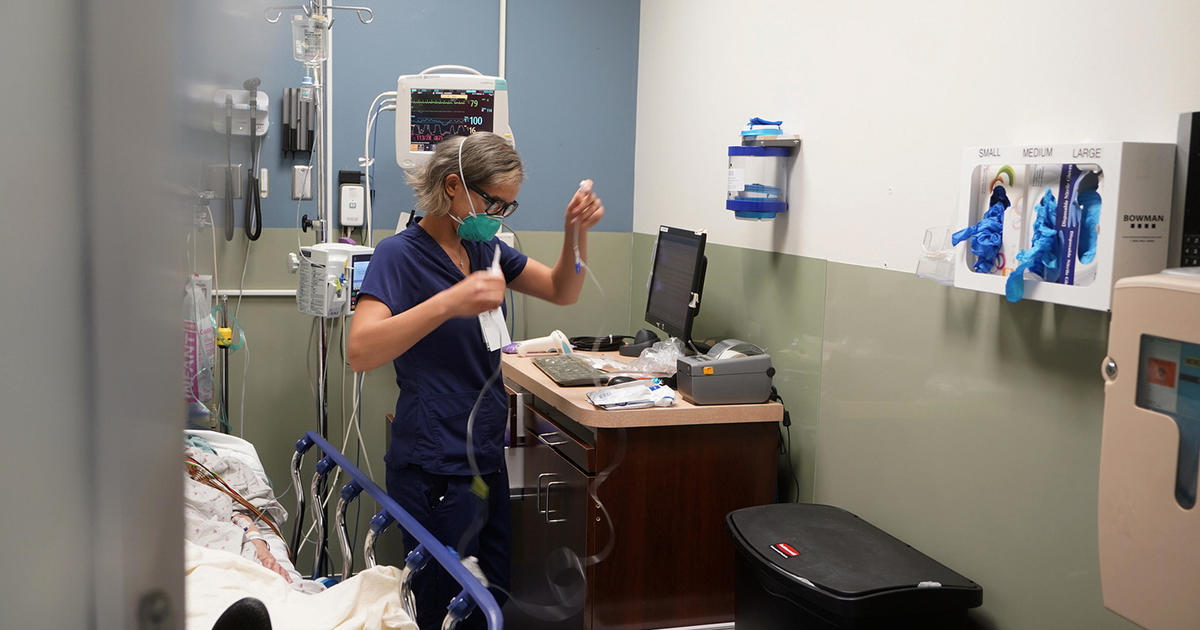Nearly a third of teen girls say they have seriously considered suicide, CDC survey shows
Around 1 in 3 high school girls in the U.S. have seriously considered attempting suicide, according to new results from a Centers for Disease Control and Prevention survey from 2021, up from less than a fifth of teen girls in 2011. And more than half of teen girls, 57%, reported feeling "persistently sad or hopeless" — a record high number.
By contrast, 14% of high school boys told the 2021 survey that they had seriously considered attempting suicide, up from 13% in 2011.
The statistics are among several mental health trends in high schoolers that have worsened most among girls over the past decade, according to data from the CDC's Youth Risk Behavior Survey published Monday.
Overall, 22% of high schoolers said they have considered suicide. That is somewhat better than the 29% when the CDC first began its biennial survey in the 1990s, but is an increase from the record low 13.8% tallied in 2009.
"While much attention has been given to the youth mental health crisis during the COVID-19 pandemic, YRBS data have shown that many measures were moving in the wrong direction before the pandemic. These data show the mental health crisis among young people continues," Kathleen Ethier, director of the CDC's Division of Adolescent and School Health, told reporters Monday.
The CDC says gaps persist between boys and girls among several trends.
In the survey, 17% of teen girls say they were bullied at school, compared to 13% of boys; 20% of girls say they were bullied over social media, nearly double the 11% of boys. And 18% of girls say they have faced sexual violence over the past year, versus 5% of boys.
When asked about substance abuse, girls had often ranked better or around the same compared to boys over the past decade.
But as of 2021, teen girls are now more likely than boys to have drunk alcohol (27% of high school girls compared to 19% of high school boys), used marijuana (18% of girls versus 14% of boys), used e-cigarettes (21% of girls versus 15% of boys), or misused prescription opioids (15% of girls versus 10% of boys).
"These data show a distressing picture. America's teen girls are engulfed in a growing wave of sadness, violence and trauma. Over the past decade, teens, especially girls, have experienced dramatic increases in experiences of violence and poor mental health," the CDC's chief medical officer Dr. Debra Houry said.
The survey also found disparities among students who identify as lesbian, gay, bisexual, questioning or another non-heterosexual identity.
"Close to 70% of LGBQ+ students experienced persistent feelings of sadness or hopelessness during the past year and more than 50% had poor mental health during the past 30 days. Almost 25% attempted suicide during the past year," the report states. It also notes they are "significantly more likely" than other peers to experience violence.
While many of the trends have substantially worsened over the past decade, the report's authors do point out that a handful of indicators are now moving "in the right direction."
The share of high school students who say they are sexually active or have already had more than four partners has fallen. Just 6% overall have had four or more partners in 2021, down from 15% in 2011.
Several overall rates of substance use have also declined since 2011 among high schoolers.
Just 23% of high schoolers overall had drunk alcohol in the 2021 survey, compared to 39% in 2011; 16% had used marijuana, down from 23%; and 13% had ever used illicit drugs like cocaine or heroin, compared to 19%.
More results from the CDC's school-based survey are expected to be released in April, which also spans other issues like diet and exercise. A total of 17,508 questionnaires were completed across 152 private and public schools around the country.
The agency said the findings underscore a need for more investment in strategies schools can employ to intervene in worsening mental health trends.
"Schools are on the frontlines of the mental health crisis, and they must be equipped with the proven tools that help students thrive," Houry said.
If you or someone you know is in emotional distress or a suicidal crisis, you can reach the 988 Suicide & Crisis Lifeline by calling or texting 988. You can also chat with the 988 Suicide & Crisis Lifeline here.
For more information about mental health care resources and support, The National Alliance on Mental Illness (NAMI) HelpLine can be reached Monday through Friday, 10 a.m.–10 p.m. ET, at 1-800-950-NAMI (6264) or email info@nami.org.



